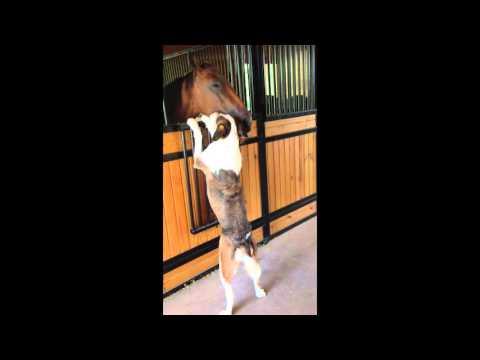Triumph produced what might be the perfect open top sports car in the 1950s and 60s. A daily driver during the week, a track-day car at the weekends, and a whole heap of fun every day of the week! From its roots as a show car that was labelled a “death trap” to a much-loved icon of freedom on the open road, the Triumph TR cars have it all. For much of their life they battled MGs and Porsches for victory in the open top arena, having an amazing 28-year production run and it still inspires new open tops into the 21st century. This video covers the Triumph Roadster, Triumph TRX, Triumph 20TS, Triumph TR2, Triumph TR3, Triumph TR3A, Triumph TR3B, Triumph TR4, Triumph TR4A, Triumph TR5, Triumph TR6, Triumph TR7 and Triumph TR8. #TriumphTR #TriumphTR6 #TriumphTR7
Video Script::
Triumph produced what might be the perfect
open top sports car in the 1950s and 60s. A daily driver during the week, a track-day
car at the weekends, and a whole heap of fun every day of the week! From its roots as a
show car that was labelled a “death trap” to a much-loved icon of freedom on the open
road, the Triumph TR cars have it all. For much of their life they battled MGs and Porsches
for victory in the open top arena, having an amazing 28-year production run and it still
inspires new open tops into the 21st century. This is the Triumph TR story. (music) The TR car story starts with the Triumph “Roadster”, produced from 1946 to 1949. After World War II,
the Government encouraged companies to “export or die” to kickstart the battered
British economy, but Triumph also saw there was money to be made in the US sports car
market. The Triumph Roadster was odd in that it had a bench seat which could accommodate
three in the front, and a “dicky seat” in the boot that could accommodate two more,
with their own windscreen but without seat belts! I’m guessing this wouldn’t score
five stars in today’s NCAP safety tests! The top speed was 75mph and the 0-60 time
was slightly faster than a snail at 34 seconds. Triumph knew they could do better. They saw
the success MG were having in North America with their T-Type, and Jaguar with their XK120.
After an unsuccessful attempt to buy Morgan, their first try was the Triumph TRX concept
introduced in 1950. Despite looking stunning to modern eyes, in 1950 it looked old-fashioned.
They found it was expensive to produce, only felt safe when a passenger was there to balance
the weight and was a doppelganger for the already released Austin A90 Atlantic which
was selling badly. So Triumph went back to the drawing board
and started delving into the parts bin, pulling out the front suspension from the Mayflower,
the engine from Standard’s Vanguard (an engine originally built for the Ferguson TR20
tractor) and the chassis from the Standard Eight. It needed to be inexpensive to build
as they weren’t expecting high sales. From this unlikely combination they created what
they called the Triumph 20TS. The car was little more than a prototype and was shown
as the Earl’s Court Motor Show in October 1952 to a mixed reaction. After the show Standard’s
owner Sir John Black asked BRM test driver Ken Richardson to try the car out. He ran
his tests and found it was low on power, called it a “death trap”, and “the most bloody
awful car I’ve ever driven”. Little did they know that the 20TS, this horrible mess
of a car, would become known as the Triumph TR1.
Over the winter Triumph’s engineers got to work fixing these problems so they could
save their sports car programme. The engine was tuned so instead of a top speed of 80mph,
it now went over 100. The brake size was increased, the chassis stiffened and lengthened, and
both front and rear suspension were modified. It seems they worked on everything except
the cigarette lighter, which was handy as it didn’t have a cigarette lighter!
In just 5 months they released the car as the Triumph TR2, and the public loved it.
It was one of the first cars to offer an optional hard top, made from futuristic fibreglass.
The soft top featured side curtains to prevent rain getting in due to its very low doors.
There were problems initially with road holding, but it was fixed by larger rear brakes and
radial tyres – something only recently productised by Michelin.
With a 0-60 time under 12 seconds, which was fast for the 1950s, Triumph wanted to showcase
the TR2’s prowess by taking it racing, and from 1954 it competed in and won many events.
The public took notice which helped to fuel more sales. Over 8,600 TR2s were made, with
the majority heading to North America. Triumph continued to race its cars well into the 1970s
to help drum up sales. In 1955, just 12 months later, Triumph released
the TR3 with its egg-crate grille. The engine output had been increased from 90bhp to 100
and the following year the TR3 fitted front disc brakes as standard, a first for a British
car. They had good reason to keep tweaking the car. It was selling well, but in 1953
the Rootes company had released their Sunbeam Alpine, Jaguar had updated the XK120 to the
XK140 in 1954, and MG had just released the MGA. Triumph continued to compete with the
Morgan plus 4, but this was relatively friendly competition as the Morgan shared the same
engine made by Triumph’s parent company, Standard. And that’s just the British competition!
These cars were constantly challenged by Porsche’s latest and greatest models.
Another update came in 1957. While it was still called the TR3, owners referred to the
update as the TR3A. It gained a wider, cheesy grin of a grille, exterior door handles and
a lockable boot. It seems these cars were popular with thieves as well! The TR3 was
so popular the original door moulds got worn out and had to be replaced – probably a
good problem for a car company to have! Given the success Triumph were having with
their open top sports cars, they wanted the next version – the TR4 - to keep ahead of
the competition. They brought in Giovanni Michelotti who had already done a great job
restyling their Standard Vanguard. He created a design that set the style of the Triumph
TR cars well into the 1970’s. The doors were heightened allowing for wind down windows,
negating the need for fiddly side curtains. The larger rear allowed for much more boot
space. One novel option was a hardtop with a fixed rear section and a metal roof that
could be removed, something Triumph called a “Surrey top”. It was made popular by
Porsche five years later as the Targa top. The engine size was increased slightly to
2.1L by boring out the existing 2.0L engine, nudging the output to 105bhp and the top speed
to 110mph. The wheel track was increased, and the car gained synchromesh on all forward
gears. The new style was needed to keep up with the
competition. The Sunbeam Alpine was already making other cars look old-fashioned, MG had
their brand-new Midget and Jaguar had just launched their admittedly more premium E-Type
with a top speed of over 150mph. The development of the TR4 came in the middle
of an earthquake for Triumph, being swallowed up by Leyland Motors in 1960. Leyland allowed
the TR4 to go ahead but stopped any of Triumph’s motorsport involvement. This was a shame,
as many of the TR3’s sales had come from their entry in competitions such as the Coupes
des Alpes and the Le Mans 24-hour race. It seems someone at Triumph had a quiet word
with Leyland management because by 1962 they were back racing again.
The TR4 was a big step forward, but North American dealers were unsure how customers
would react to it, so the TR3 continued production in parallel for another two years, informally
known as the TR3B. The TR4 was a success, with over 40,000 sold.
MG fought back in 1962 with their MGB roadster, and customers praised the MG’s superior
suspension. Triumph had to improve, so the TR4’s chassis was modified to take new independent
rear suspension, proudly denoted with “IRS” badges on the back. The revised car was wider
and 50kg heavier. The grille changed once again to a straight slat design. However,
it retained its simple, no-nonsense interior, except for new walnut trim. The TR4A was released
in 1965. Although most welcomed the new revised suspension,
two US distributors fought back and got Triumph to build TR4A’s with the old live axle system,
offering the new independent suspension as an upgrade. As the North American market was
so important, Triumph complied, so the new TR4A was retrofitted.
With the success of the TR4 it was natural someone would try a coupé version. It was
built not by Triumph but by the Dove Company of Wimbledon who produced the Dove GTR4 in
1963 with a light fibreglass roof. However with a cost 30% higher than a TR4 hardtop
and barely any extra room, not many were sold. But this didn’t stop Triumph from creating
their own coupé – the GT6 – in 1966, built on the smaller Spitfire platform.
Unfortunately, it also failed to sell well. As the 60’s rolled on the US started implementing
emissions legislation that started to rob the TR4 of power. Triumph’s next car needed
a bigger engine! Triumph’s more powerful vision of the future
was codenamed the Triumph Fury. Styled again by Giovanni Michelotti who’d styled the
TR4, this had the look of a larger Spitfire, a car he’d also designed. The plan was to
use the larger inline 6 engine from the Triumph 2000, or possibly even a V8. Where the TR4
had a separate chassis, the Fury would use a monocoque bodyshell. A thoroughly modern
car, but one that was killed off before it reached production. It’s likely that management
found it too expensive and looked for a cheaper TR4 update.
Instead of Fury, we got project Wasp. The TR4 would be lightly re-styled by Michelotti,
using the existing chassis. The larger 6-cylinder engine would be used, and the increased 150bhp
would help counteract the new US emissions restrictions, plus add-ons like air conditioning
that sapped the engine’s power. It would also help it compete against new, more powerful
cars like the MGC, and would give it additional sporting appeal. The extra power would get
the car to 60 in 8.2 seconds and on to 125mph. The car would be released as the TR5 in 1967.
The engine was fitted with fuel injection, something quite rare in the 60’s. As this
was a new system, it was inevitable there would be teething problems. The car had a
tendency to cut out when the fuel tank was around ¼ full, due to air pickup from the
fuel tank into the new fuel injection system. As the 1970s approached the competition against
Japanese rivals increased. These were cheaper which meant the TR5 had to remain affordable,
meaning less money for investment in future models. These price pressures, plus tighter
emissions standards in the US led to a much less powerful carburetted version of the TR5,
dubbed the TR250. Despite releasing the TR5 in 1967, Triumph
would release the TR6 just over a year later in January 1969. The big change was the new
styling, performed by Karmann-Ghia of Germany as Michelotti was unavailable. The centre
section was retained, but the front and rear were all new. By using clever design tricks
Karmann was able to use the doors and windows from the TR4! It produced a wonderfully proportioned
look that proved to be a strong seller. By now the British Motor Corporation had been
subsumed by British Leyland, which meant both MG and Triumph were under the same wing. This
allowed dealers to be rationalised, further reducing costs, but it meant British Leyland
had MG and Triumph cars that overlapped each other considerably.
Before this merger Triumph’s attention had already turned to the TR6’s successor, and
with good reason. As the Fury concept hadn’t gone to production the car still used the
1953 Standard Eight chassis rather than having modern unibody construction. Triumph started
on the “Bullet” and “Lynx” projects. “Bullet” would be a TR6 with a rollbar
and T-bar, like the mark 1 Toyota MR2. The Lynx would be a coupé GT like the previous
Dove GTR4. Following the merger there were concerns these projects were essentially a
duplicate of MG’s ADO21 project. In 1970 British Leyland decided to kill off the MG
name and focus purely on the Triumph, so development work on the Bullet and Lynx designs went ahead
with a tentative production date of 1975. Spen King, the designer of the Range Rover,
was brought in to bring the cars to reality. He travelled to the US to ask dealers what
customers wanted from their new car. He was surprised to find that owners wanted a simple
front engined, rear wheel drive car that was reliable and simple enough that it could be
easily repaired at the side of the road. Maybe the last request was made because MGs and
Triumphs were always breaking down! But halfway through development management
were having second thoughts. The new design seemed too conventional, which had some merit,
especially compared to the rejected MG ADO21 design. They’d fallen in love with ADO71
which would turn into the Austin Princess, and wanted something more like that. Triumph
tried to alter their designs to appease management, but it wasn’t enough.
Enter Harris Mann. He was Leyland’s new star designer after his work on the Morris
Marina, Austin Princess and Austin Allegro. He made a wonderful futuristic design with
the TR7, managing to easily incorporate the new high-impact bumpers that US legislation
demanded. The new car was up against more sophisticated
competition like the Datsun 240Z and the mid-engined Porsche 914. With impending US legislation
looking to all but outlaw open tops, British Leyland wasn’t keen to spend its limited
funds on low volume open tops when it was trying to win the volume car sector back at
home. The new car would have a roof, and the open top MGB would be sold until legislation
outlawed it. The Triumph Lynx project was green-lit, and
it was expected that other sports cars would be built off the same platform. British Leyland
were thinking of making their own Ford Capri, which was turning into a runaway success,
and a V8 model could be an updated Triumph Stag. The engines would be the
4-cylinder from the Triumph Dolomite and the Range Rover’s V8.
The Lynx wasn’t going to be technically sophisticated, but the ride and handling were
greatly improved over the TR6. It was even one of the first cars to have a basic form
of crumple zone. The TR7 was what people in the UK would call
a “Marmite car”. That is, you either love it or hate it. When the Italian car designer
Giorgetto Giugiaro first saw it he stood back, walked around the other side then remarked
“Oh my God! They’ve done it to the other side as well!”. But there are some of us
that love the TR7 look! As North America was the number one market
for the new car, it was introduced there first in 1975. The V8 wasn’t ready, so customers
had to make do with a 4-cylinder engine heavily hampered by US emissions legislation. It had
just 90bhp compared to the TR6’s 111bhp. In California they had to make do with a paltry
76bhp! It was a disappointment for customers looking for a newer, faster car.
The interior was much more comfortable than the previous basic TR6 but being the 1970’s
there was plastic everywhere with not a bit of walnut in sight.
In 1976 the car was launched in the rest of the world, with the 4-cylinder engine producing
a better 105bhp, with a respectful 0-60 time of 9.4 seconds and top speed of 110mph.
Sadly, build quality wasn’t good which hurt sales both in North America and at home. Industrial
action at the Speke plant delayed production, and there was further delay as production
was moved to Canley. Both these factors meant shortages just as the new car marketing blitz
was hitting customers. By 1978 all thought of new TR7 derivatives
had gone out the window. British Leyland was broke and what little money was left was being pumped
into the new Austin Metro and Maestro projects. With one last throw of the dice
for the TR7, engineers shoe-horned the 3.5L V8 from the Range Rover and the Rover SD1
into the little car and called it the TR8, and in 1979 an open top version was launched.
This was just what the North American market had asked for, with the upgraded engine providing
up to 148bhp and a 0-60 time around 8 seconds. As production improved and the V8 and open
top hit American shores, sales started to pick up. But if you know your geopolitical
history from 1979, which I know you do, you’ll know the Iranian revolution caused
a global recession as it was a major oil exporter. The UK’s attempts to battle 16% inflation
adversely affected the US exchange rate, meaning the newly launched TR8 was now much more expensive.
While journalists loved it, customers stayed away.
At the end of 1980 production was moved yet again - this time to Solihull where the SD1
was produced. But if proof was needed that the TR7 was the unluckiest car in history,
the plant was scheduled for closure the following year. The TR series of cars ran for an amazing
28 years selling over 350,000, providing thrills and motorsport fun. Open top cars are alive
and well today with cars like the Fiat 124 Spider that not only look like the TR cars
of old but get 168bhp out of a tiny 1.4L engine, with a 0-60 time of just 6.9 seconds. And
that’s with an automatic gearbox! Engine technology has certainly moved on.
If you like these videos and want to get early access to new videos, plus exclusive extra
content, consider supporting me using the Patreon link below, and don’t forget to
hit the subscribe button to get notified of new videos. Let me know your experiences of
the Triumph TR cars in the comments below. Thanks for watching and see you in the next
video!
- Category
- Automotive
- Tags
- triumph tr, triumph tr6, triumph tr7, triumph tr8, triumph tr5, triumph tr4, triumph tr3, triumph tr2













